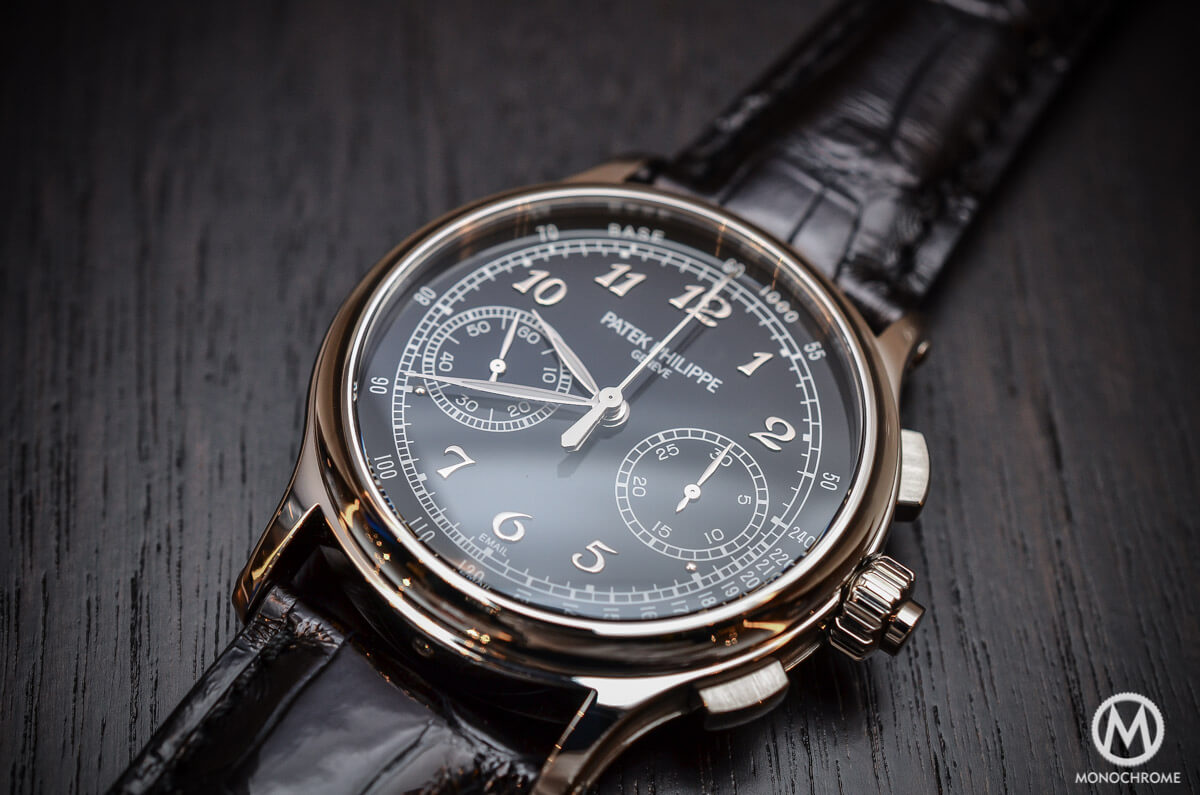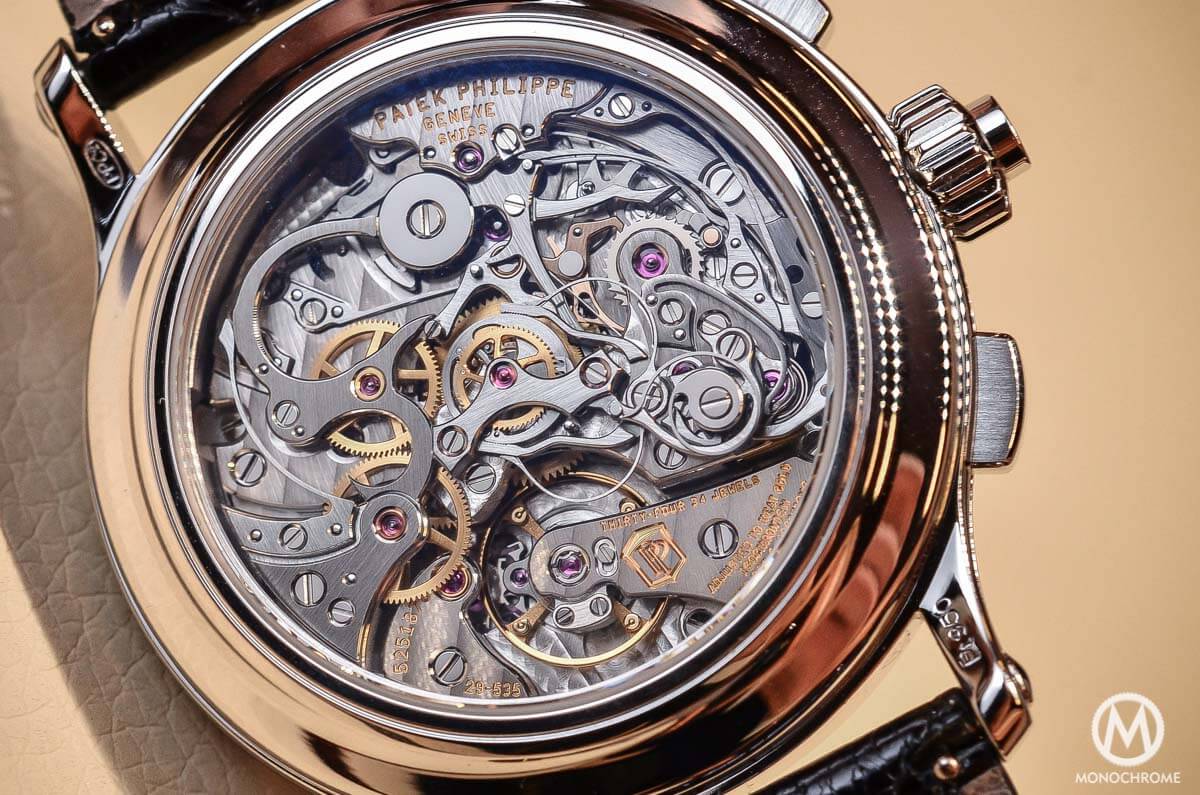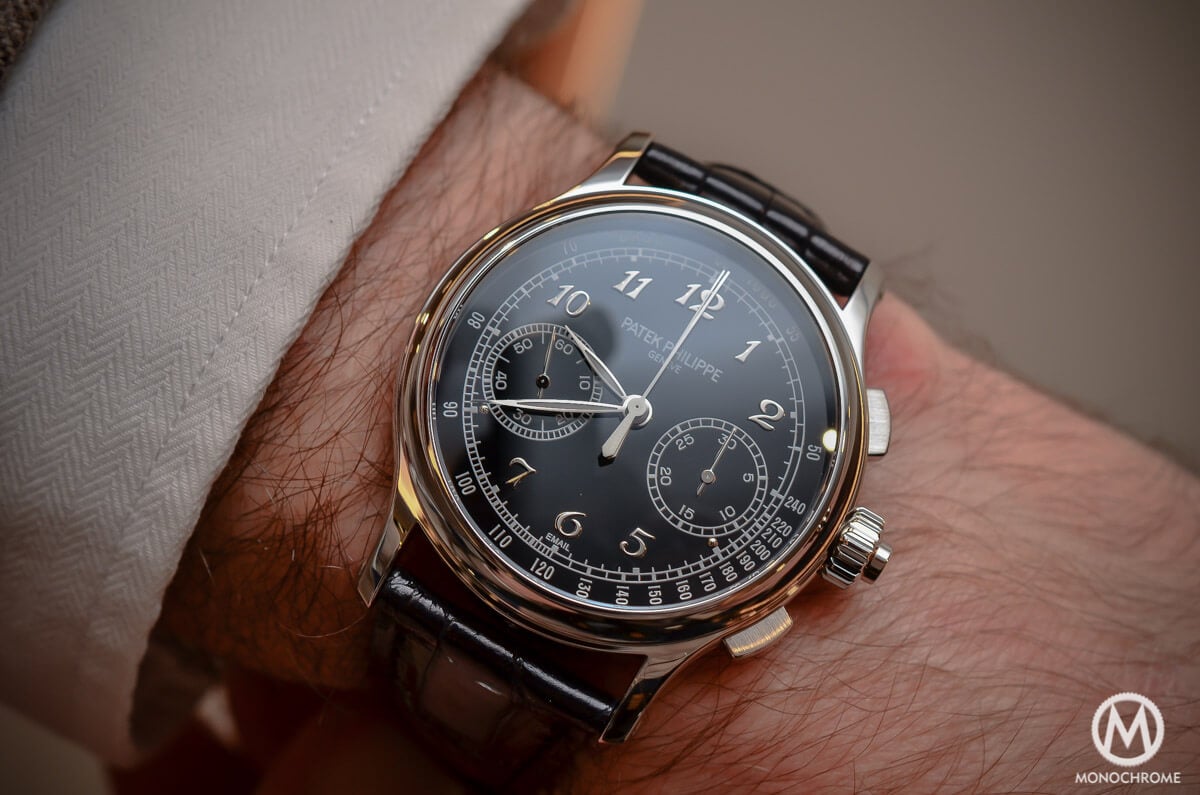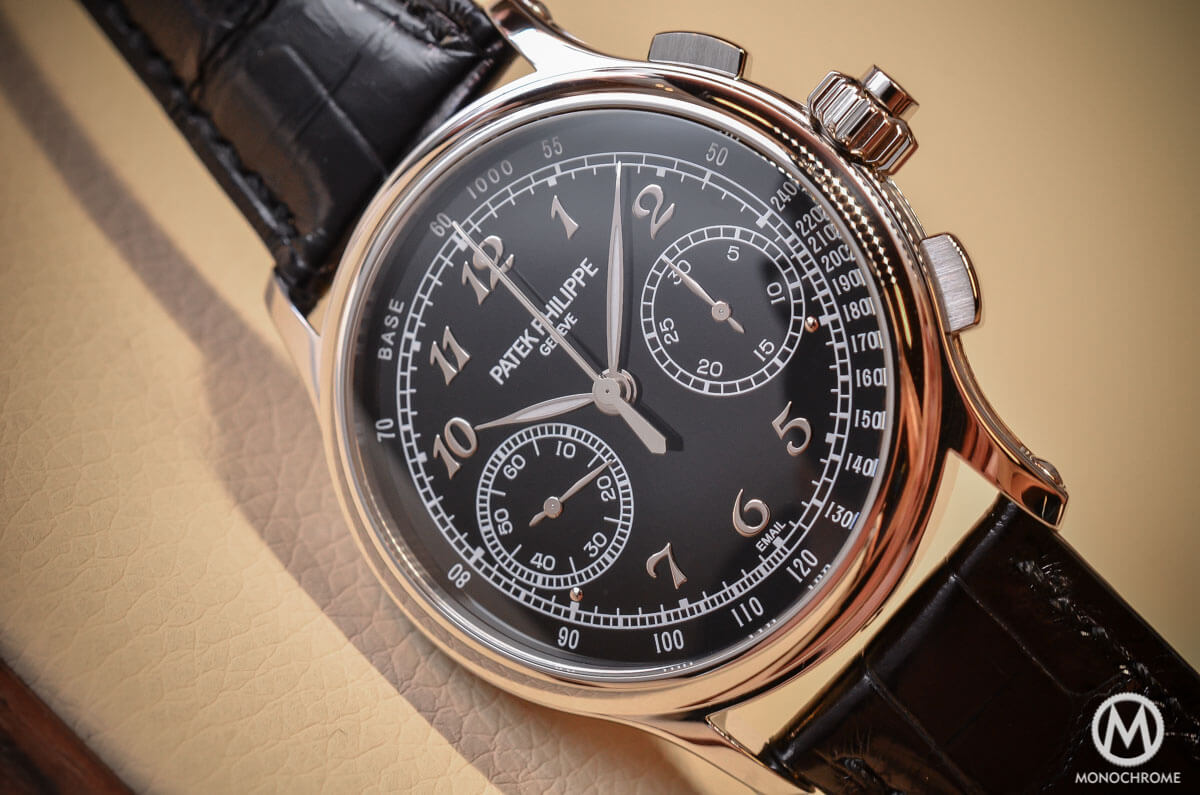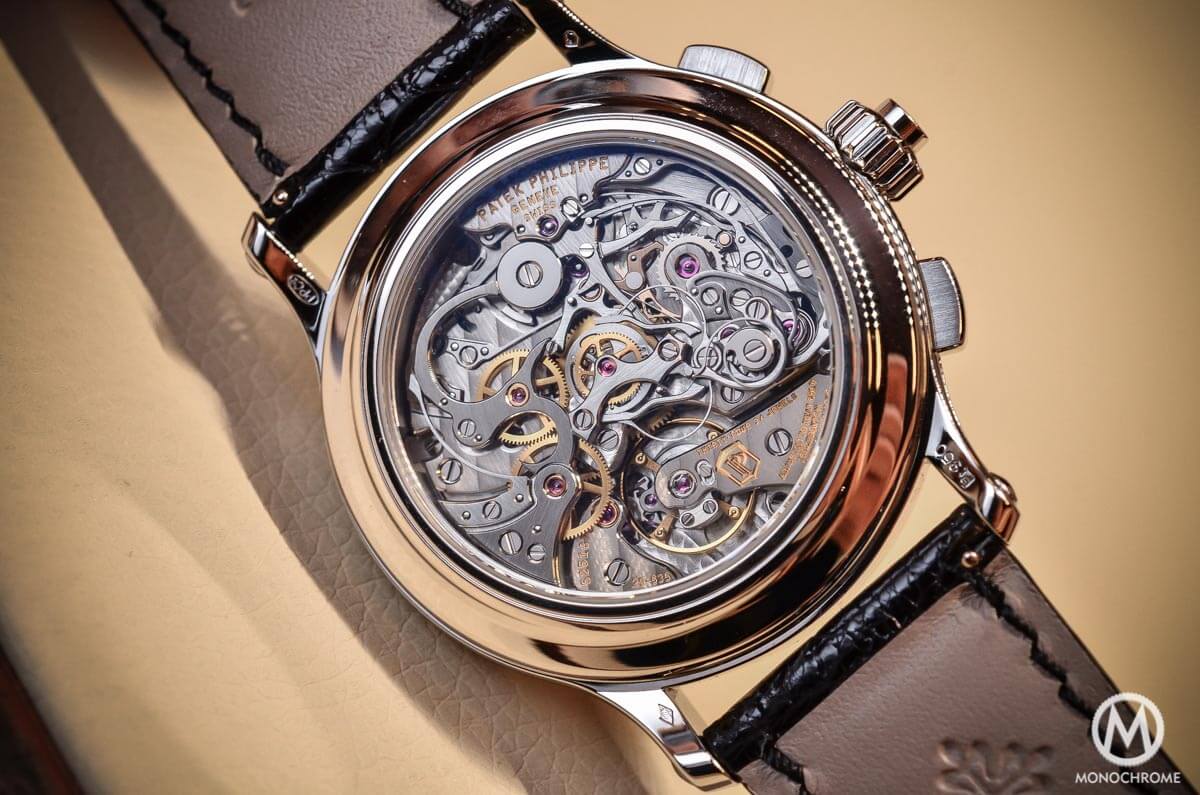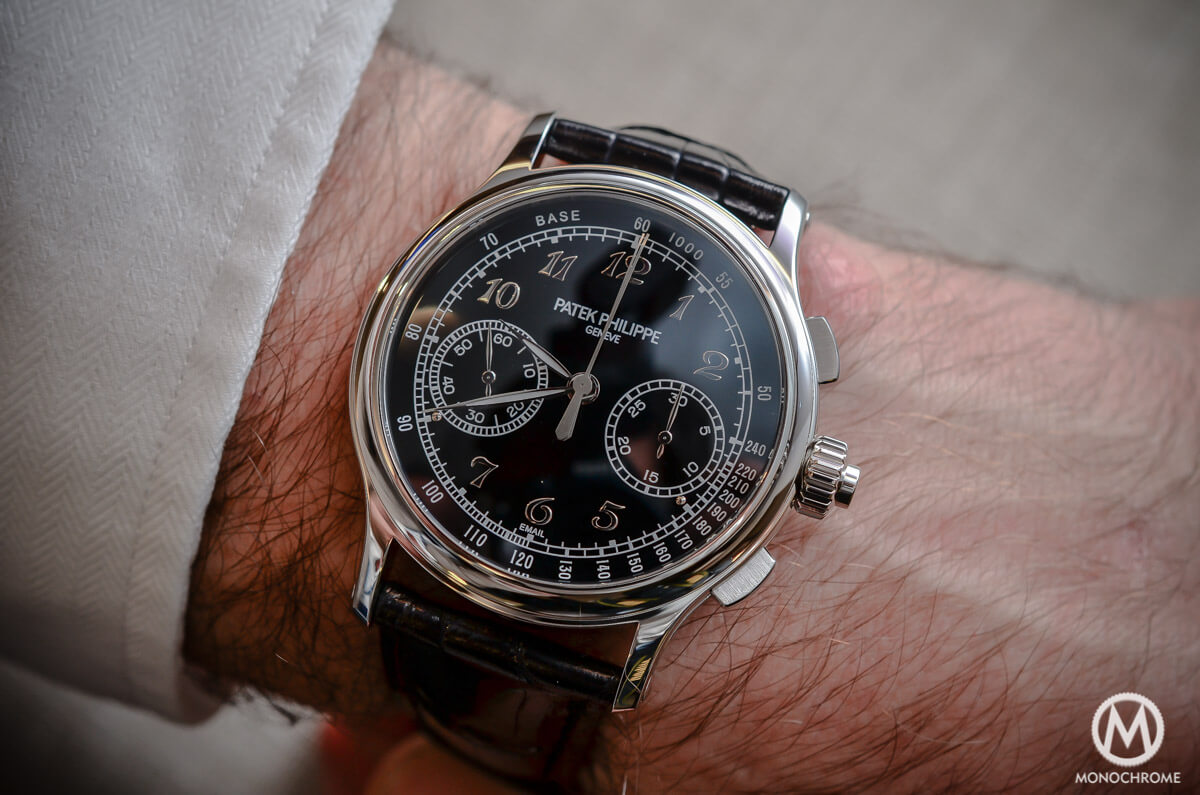Back to basics: the Patek Philippe Ref 5370 Split-Seconds Chronograph – REVIEW with live photos, specs & price
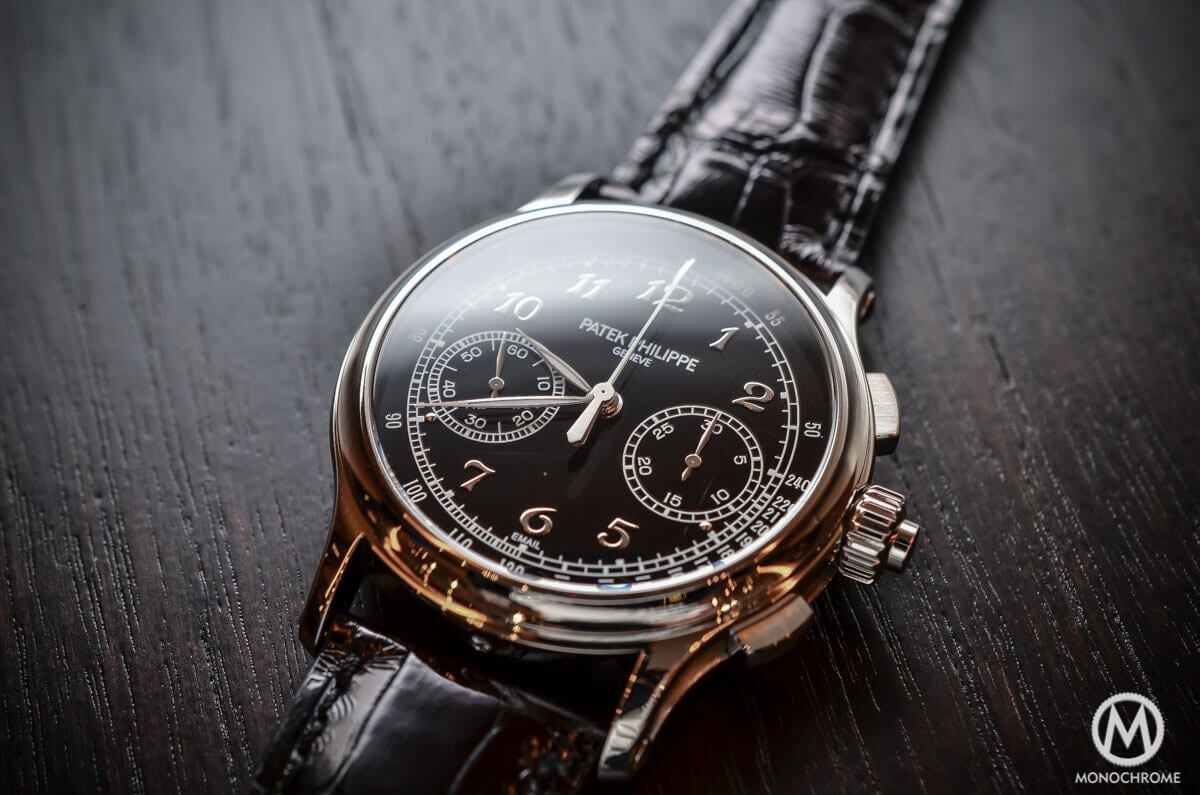
Sometimes, it happens that Patek Philippe acts… differently. Recently, they came with the Calatrava Pilot Travel Time Ref. 5524, an unusual (from Patek’s standards) pilot watch or with the Ref. 5960/1A, a sporty steel annual calendar chronograph with coloured accents. They also came with the Nautilus, a now classic watch that wasn’t so classic after all (back in 1976 of course). However, Patek Philippe also knows how to do what collectors expect from them – and this year, they are bringing to us what we will dare to call a proper vintage-inspired timepiece: the classic, high-end, complicated and super-elegant Patek Philippe Ref 5370 Split-Seconds Chronograph.
Background
If you look closely at the Patek 5370, you’ll see that everything in it is reminiscent of past creations, starting from the dial, the indexes, the hands, the complication used or the shape of the case. This watch feels like buried during the 1940s and dug out just because the hardcore collectors of the watch world wanted to see it. Some of the recent creations of Patek Philippe were certainly focus on conquering new markets, on attracting younger customers or new comers. The 1976 Nautilus was and still is part of this gang of watches, even if now seen as a pure classic and one of the best interpretations of Patek Philippe’s spirit. The new Calatrava Pilot or the Ref. 5960/1A are also the kind of watches made with the idea of gaining new collectors. The Patek Philippe Ref 5370 Split-Seconds Chronograph is however slightly different.
This new creation by Patek is deliberately made to please the hardcore collectors, the ones that are fully attached to the brand, the one that are using Sotheby’s or Christie’s auction catalogs as beside books. Because of its (apparently) classical shape, its complication, its materials and its price, this watch is not made for the typical bling-bling collectors. We’re in front of watch that is vintage-oriented in every of its aspects. You’re not only buying the name on the dial but the story that is hidden behind.
The inspiration is clear for Patek. This Ref. 5370 takes a lot of clues from the 1940s to 1960s split-seconds chronographs – and to be precise, some of the ref. 1563 (for the dial and the hands, but not the Jean-Claude Biver one sold at the 175th anniversary auction) and the ref. 1436 for the case (especially the lugs with a cabochon) and the pushers (the crown with the activation-pusher of the split-seconds integrated). However, this watch is also an important one and a modern one for several reasons. Just like the the Patek Ref. 5270 was the first perpetual calendar chronograph to include the new manually wound fully in-house chronograph movement, the Patek Philippe Ref 5370 is the first split-seconds chronograph to be based on this manufacture calibre. It is also the first two-pusher split-seconds chronograph for ages. Since the ref. 1436, all of the rattrapante chronograph were single-pusher ones. One exception to this rule is the famous Patek 5004 / 5204, which associates a two-pusher split-seconds chronograph to a perpetual calendar module.
Horology lesson: What is a split-seconds / rattrapante chronograph?
A chronograph is a complication that allows you to time events or intervals of time. On the contrary of a classical watch where the second hand runs continuously around the dial, on a chronograph you have the ability to control it. By using two pushers (classically located at 2 and 4 on the case), you can start, pause and reset the second hand. When stopping it, and with the help of a track (whatever it is a second, a tachymeter, a telemeter, a pulsometer scale), you’ll be able to read an interval of time or to calculate a speed, a duration, a pulse rate or a distance. However, this allows to time only one event. In some conditions, you’ll probably have the need to calculate intermediate times – for instance, timing each lap of a race that counts several laps.
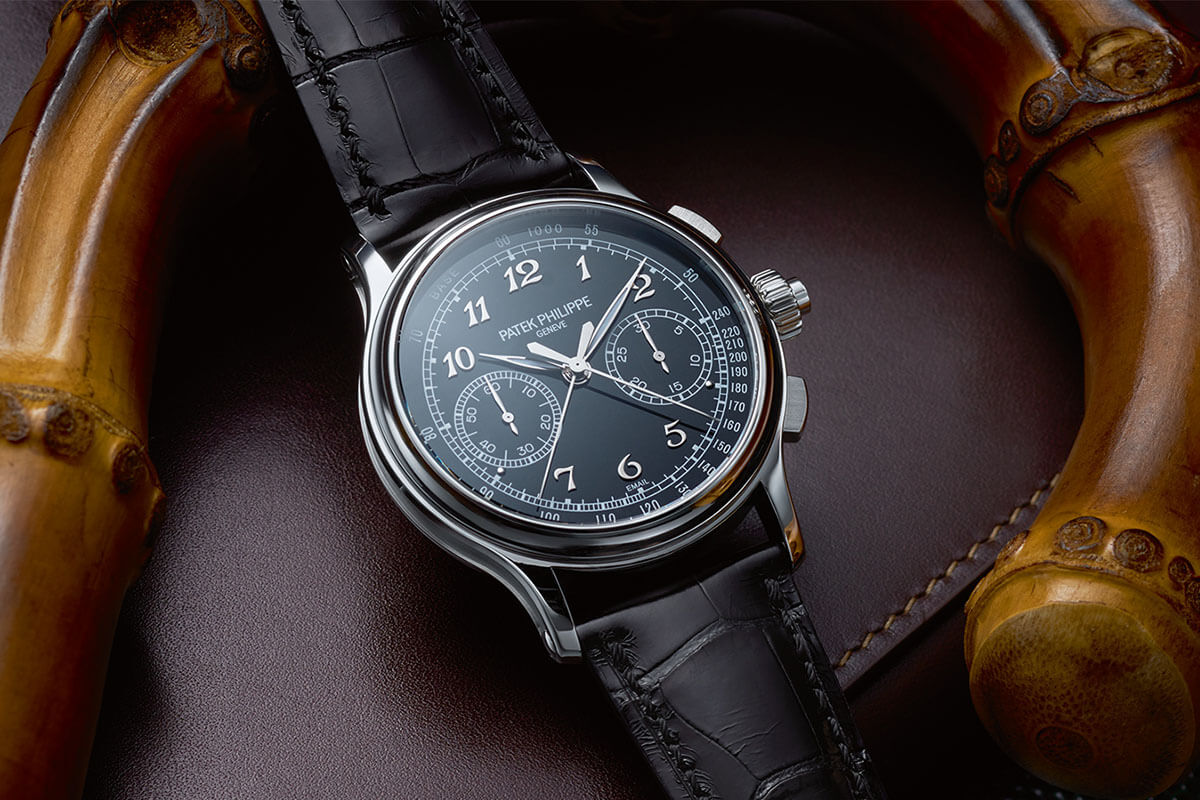
In this case, watchmakers found a solution called the rattrapante / split-seconds chronograph. This complication is based on two second hands located one on top of the other. While starting the chronograph, both are running simultaneously. By using a third pusher (usually located in the crown or at 10 on the case), you can stop one of the two second hands, while the other one continues its way on the dial. Then, it allows you to have a view on intermediate times without stopping to time the whole event in question. By pushing again the third pusher, the second hand that was stopped will catches up the other second hand (rattraper in french) and they will continue to run simultaneously, until you need to time another intermediate time.
The construction of such a mechanism is difficult, as it requires lots of new parts compared to a simple chronograph. Usually, we see an extra column-wheel that controls clamps. This kind of fork tightens one of the central wheels that are linked to the second hands, in order to stop its run. It works as a break. Once pushing again the third pusher, the clamps open and the second hand catches up the other one. If you compare the Ref. 5370 to the non-rattrapante edition Ref. 5170, you’ll see that the movement of the first one comprises 312 parts while the other one has 269, making 43 extra-parts, mainly all levers, gears, springs or wheels that require a precise adjustment and, because it’s Patek, a superb finish.
The Patek Philippe Ref 5370 Split-Seconds Chronograph
Let’s get back now to our main concern, the 5370. This watch is everything a classical and dress chronograph should be, however with plenty of details that create a very elegant and desirable object. Even if it sounds generous, the 41mm platinum case remains very restrained and comfortable. Of course, this is far from the 35mm / 36mm cases of the vintage split-seconds chronographs from Patek but, by actual standards, it remains a decent and pleasant size. Design-wise, The Patek Philippe Ref 5370 Split-Seconds Chronograph is all about a timeless classic that represents what the Geneva-based manufacture can do best BUT with a twist.
Seen from the top, nothing seems to be original. The rather slim concave bezel that merges the soft camber of the sapphire crystal is also typically Patek. However, the sides and the lugs are showing a bolder design. The lugs do not seem added to the case. On the contrary, they nicely merge from the case bands to form a single curve. Lugs usually tapered toward the strap attachments but the one used in the 5370 elegantly enlarge, as they are terminated with fine cambered white-gold cabochons – just like some vintage chronographs from Patek. The case bands are also superb, with a recessed part in the middle that contrasts from the rest of the case with a linear satin finish. Due to the shifted location of this satinage, it can only be done by hand. Besides being visually pleasant, this recess also lightens the profile of the watch and creates a slimmer perception.
What a dial too… What has to be said about this dial is that it boasts a superb purity together with several stunning details. Pure because of its simplicity. Indeed, it only shows what is the essence of a chronograph, meaning the time and two sub-dials. Nothing more, nothing less. No date aperture, no useless registers, no complications, simply a 30-minute counter at 3 and a small second at 9 – a typical 1940s / 1950s bi-compax layout – and a tachymeter scale. Same goes for the leaf hands, that are discreetly filed with white luminous material. With such a description, you’d expect the dial of the Patek Philippe Ref 5370 Split-Seconds to be a bit boring.
However, it shows a pitch black tone that is all due because of the use of grand feu enamel. Made from a solid white gold plate covered with enamel powder and then heated at 850°, it reveals a glossy, deep black colour – after and long polishing process. This intense black dial contrasts with another superb detail: the Breguet numerals, made of highly polished white gold. The association of this clean, pure black face with a restrained amount of literature and features is creating the essence of a chronograph, just like vintage timepieces from Patek.
Finally to the mechanics. We told you, this watch is feature-wise very simple. It only features the time and a split-seconds chronograph – meaning that it is a technically impressive watch. A proper chronograph (controlled by a column wheel) is already something difficult to design and conceive, considering the amount of parts required and the difficulty to adjust them. When you add a rattrapante to the equation, it begins to be quite a high-end mechanism.
The Patek Philippe Ref 5370 Split-Seconds Chronograph features the Calibre CHR 29-535 PS – where CHR means chronographe à rattrapante in french. The base Calibre 29-535 was launched in 2009 as the first manual winding chronograph movement developed and manufactured fully in-house by Patek. It is used as a base in several other watches from the brand: as a chronograph-only in the 5170 and with an extra perpetual calendar module in the three generations of the Ref. 5270. It now comes with the finest: a split-seconds.
This movement is the mix of a classical architecture (manual winding, column wheel, split-seconds) with modern technologies (wheels with patented tooth profiles, self-adjusting hammers or a modern 4hz frequency). It also brings innovations directly linked to the rattrapante, like a newly designed isolator that uncouples the split-seconds wheel from the chronograph wheel (to eliminate unwanted friction and prevent a degradation of balance amplitude) and a split-seconds lever that positions a ruby roller between two flat heart cam shoulders keeps the chronograph and split-seconds hands precisely aligned.
The pleasure of the Calibre CHR 29-535 PS is not only technical but also visual because of:
- Its complex architecture and a great depth. It features multiple and complex bridges, gears, levers and springs that are all visible, including the module for the split-seconds.
- The beauty of the finishes. All the parts are polished or satinated or brushed or grained or bevelled or all of that together. For example, the steel parts are chamfered (both sides) and then their surfaces are straight-grained. The caps over the column-wheels and the split-seconds clamps are black polished. Every part, including the very small springs, screws or levers, are hand-finished.
- It features the Patek Philippe seal and it is regulated to -3/+2 seconds per day
After that, it is hard to find any defaults to this Patek Philippe Ref 5370 Split-Seconds Chronograph. All the visual aspects are superb, including the stunning shape of the case and the purity and exclusivity of the enamel dial. The movement is also quite a piece of pleasure, both on the technical and finishing sides. With this 5370, Patek Philippe really goes straight to the heart of hardcore, non-ostentatious collectors. It might have all the aura and the rarity of other rare Pateks, it remains a discreet one that is made only for the eyes of real connoisseurs and not to be showed. In a sense, what a Patek Philippe should be.
The Patek Philippe Ref 5370 Split-Seconds Chronograph will be made in very low production numbers (even if non limited) and priced at 217.960 Euros.
The image credited to Gary Smith for QP magazine comes from the article here.

